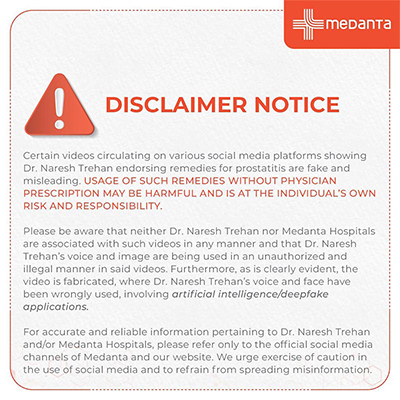
Use of Extracorporeal CO2 Removal to Manage Acute Severe Asthma
Management of acute severe asthma involves use of inhaled beta-2, anticholinergic agents, corticosteroids – oral or intravenous – and the use of magnesium sulphate (MgSO4). Use of non-invasive ventilation (NIV) in acute severe asthma, called asthmaticus, is not well proven. However, NIV can be tried in patients who are conscious, oriented, haemodynamically stable and not at risk of impending respiratory failure.
The need for invasive mechanical ventilation arises in the event of worsening oxygenation, respiratory distress, fatigue, worsening pH, and rising partial pressure of carbon dioxide (pCO2). Rescue therapies for refractory status asthmaticus, include heliox, inhalation of general anaesthetic agents, ketamine infusion, methyl xanthines and extracorporeal life support. Ted Kolobow and Team were the first to demonstrate the use of extracorporeal CO2 removal (ECCO2R) devices in the year 1977.
ECCO2R is a technique to decarboxylate blood and thus correct hypercapnia and respiratory acidosis. It is similar to the extracorporeal membrane oxygenation (ECMO) process, but uses lower blood flow, usually less than 1,500mL/min. Therefore, this technique has little or no impact on blood oxygenation. Initially, ECCO2R was developed to treat patients with acute respiratory distress syndrome (ARDS), but because of the progressive improvement of this technique, and its use in hospitals, ECCO2R could be proposed as a therapeutic option in cases of hypercapnic respiratory insufficiency. It can either be considered during acute and severe decompensation of chronic obstructive pulmonary disease (COPD) or in ARDS for less invasive mechanical ventilation (IMV).
Case Study
A 63-year-old male patient with a medical history of hypertension and asthma for 20 years presented in the Emergency of Medanta - Patna. He had been experiencing breathing difficulty for 2 days and his condition had significantly worsened over the past few hours.
His at-home regimen included anti-hypertensive medicines and albuterol metered dose
inhaler (MDI) as indicated. Five years ago, the patient had been admitted for steoarthritis
of the right hip and had undergone total hip replacement (THR). During the course of the treatment, he was intubated. In view of difficulty weaning, the patient was tracheostomised and had to endure a prolonged stay in the ICU. Medical records were suggestive of severe bronchospasm.
At Medanta - Patna, the patient was evaluated by the emergency team. The physical examination was notable for diffuse bilateral expiratory wheeze; lab investigations revealed increased white blood cells (WBC); chest X-ray was suggestive of hyperinflation. However, there was no focal opacity, pneumothorax or pulmonary edema. His 2D ECHO was suggestive of mild concentric left ventricular hypertrophy (LVH), no regional wall motion abnormalities (RWMA), left ventricular ejection fraction (LVEF) of 55%, grade-1 diastolic dysfunction (DD) and pulmonary arterial systolic pressure (PASP) of 18mmHg. Arterial blood gas (ABG) analysis was suggestive of type-2 respiratory failure with pH7.17, pCO2 72mmHg, pO2 95mmHg, HCO3 25.9mmol/L.
Patient was started on NIV, nebulisation with beta-2 agonist/anticholinergics and IV hydrocortisone dosage of 100mg every 6 hours. He was then shifted to the ICU. ABG at the time was pH7.17, pCO2 68.8mmHg, pO2 115mmHg, HCO3 25mmol/L.
In view of persisting acidosis and poor compliance to NIV, the patient was intubated with
endotracheal tube (ETT) of 8.5mm and started on invasive mechanical ventilation. He was administered a slow intravenous dose of 2gm MgSO4 over 1 minute. Worsening acidosis and elevated airway pressure prompted the use of intravenous Fentanyl. Despite conventional treatment (bronchodilators, steroid, MgSO4), patient continued to experience severe bronchospasm.
On Day 2 of ICU admission, ABG was pH7.098, pCO2 80.4mmHg, pO2 105.3mmHg, HCO3
21.4 mmol/L. On Day 3, he was started on inhalational sevoflurane dose of 2.2%-4% using anaesthesia machine. However, after 4 hours of use, the patient developed significant hypotension and the use of sevoflurane was stopped. Day 3 ABG was pH7.150, pCO2 75.8mmHg, pO2 90.7mmHg, HCO3 27.9mmol/L.
On Day 4, ABG stood at pH7.09, pCO2 79.4mmHg, pO2 58.0mmHg, HCO3 24.0mmol/L. In view of the patient’s condition, it was decided to try extracorporeal carbon dioxide removal. The right femoral vein was cannulated using the 11.5 French double-lumen dialysis catheter. The assembly consisted of the QUADROX-i paediatric oxygenator, Fresenius 4008S dialysis machine, air-oxygen blender and 3/16inch polyvinyl chloride (PVC) tubing. He was administered 5000 units of unfractioned heparin. Blood flow was set at 350ml/min with sweep gas flow of 5L/min to start with and was titrated according to the ABG. Patient was started on heparin infusion and dose was titrated according to activated clotting time (ACT).
Day 5 ABG of pH7.168, pCO2 55.4mmHg, pO2 107.2mmHg, HCO3 19.7mmol/L was suggestive of slight improvement. On Day 6, ABG further improved to pH7.15, pCO2 58.7mmHg, pO2 99.6mmHg, HCO3 20.0mmol/L. Considering this, ECCO2R was stopped 72 hours after its initiation. On Day 7, as the ABG parameters stood at pH7.241, pCO2 49.5mmHg, pO2 119.8mmHg, HCO3 20.8mmol/L, the patient was given pressure support trial, but he was not able to tolerate it and was continued on controlled ventilation. On Day 8, percutaneous tracheostomy was done with Portex 7.5mm tubing under bronchoscopic guidance. Procedure was uneventful and he was assessed for weaning on a daily basis. Physiotherapy, both chest and limb, was done regularly twice a day. On Day 12, the patient was decannulated and shifted to the ward. Patient was discharged on Day 15 of hospital admission.
Conclusion
Evidence for the use of ECCO2R in acute severe asthma is limited. ECCO2R may, however, be considered in the context of severe bronchospasm refractory to maximum medical therapy.






